
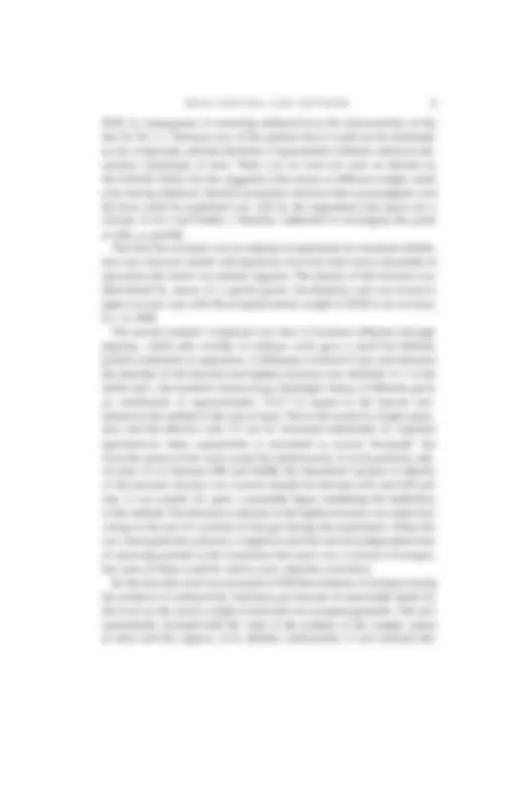
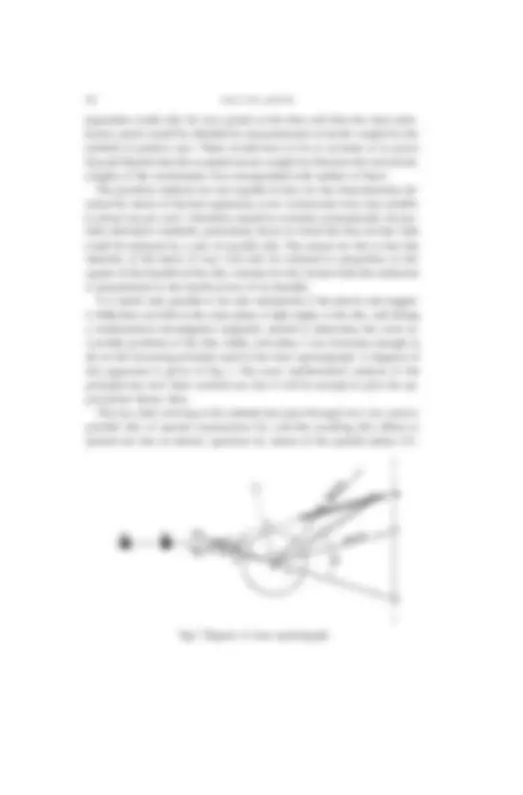
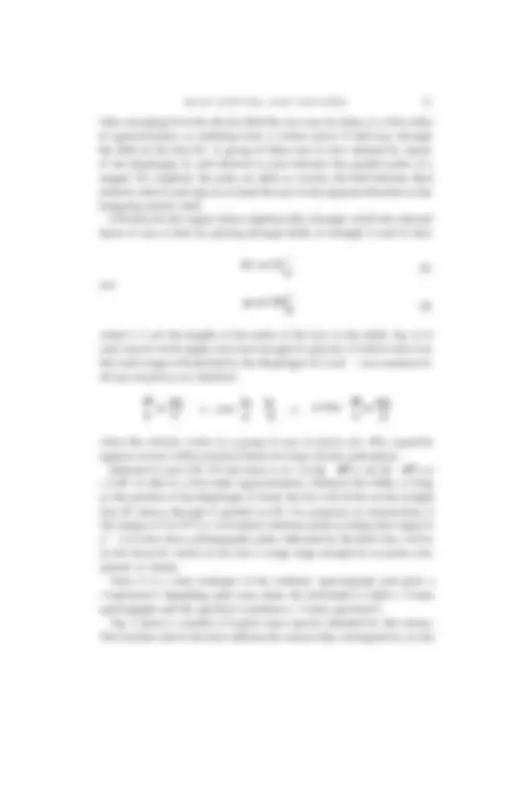
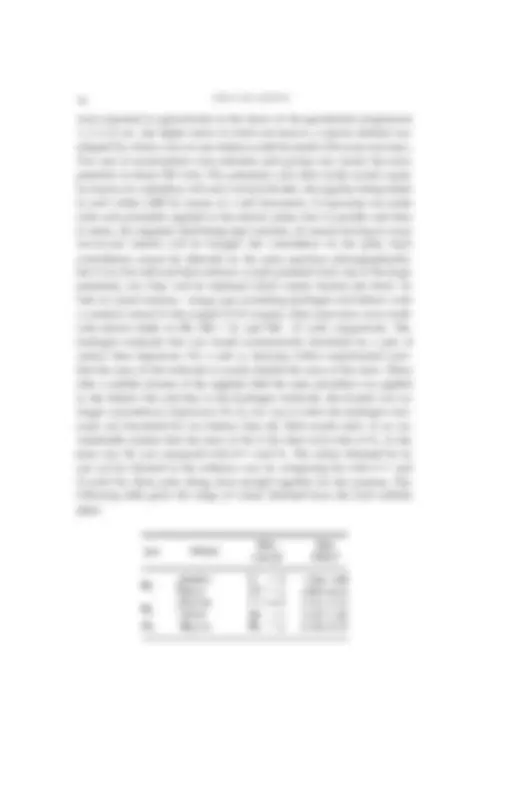
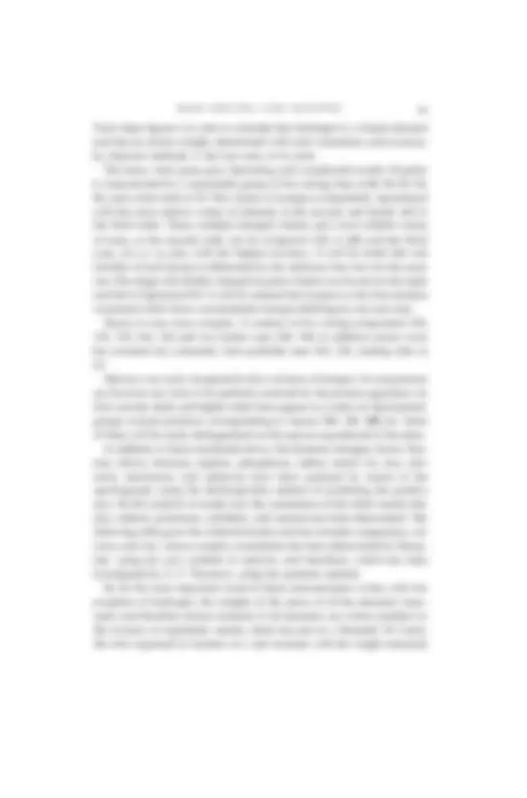

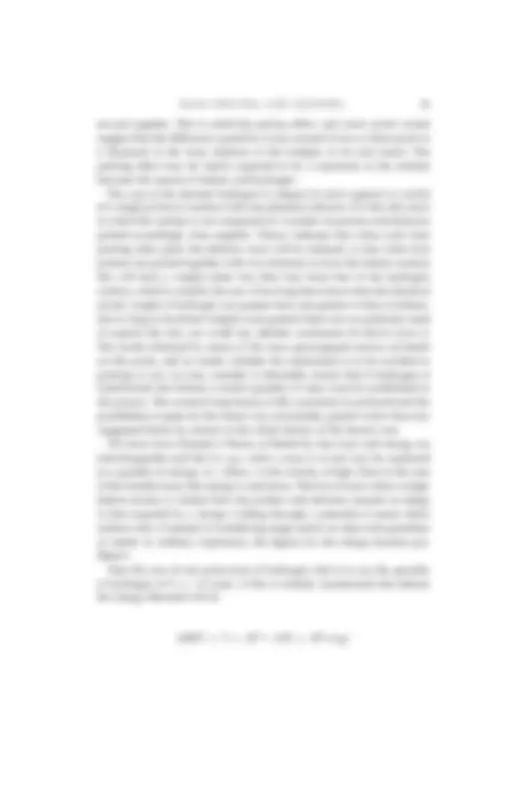
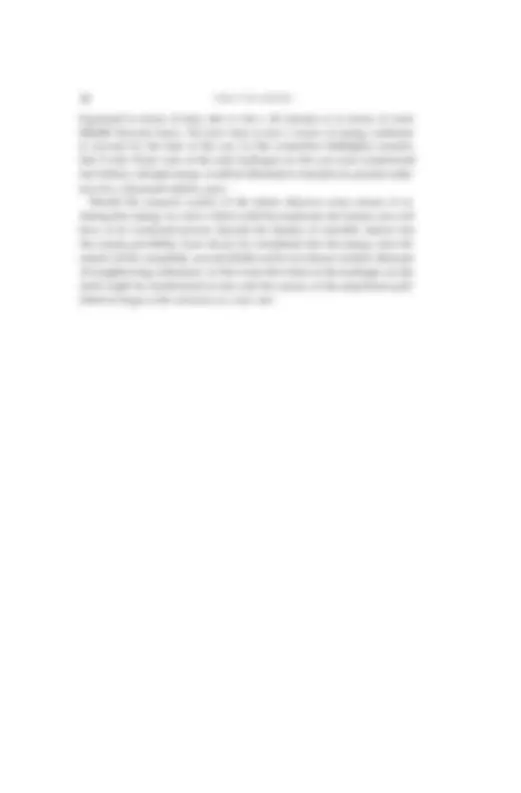


Study with the several resources on Docsity

Earn points by helping other students or get them with a premium plan


Prepare for your exams
Study with the several resources on Docsity

Earn points to download
Earn points by helping other students or get them with a premium plan
Community
Ask the community for help and clear up your study doubts
Discover the best universities in your country according to Docsity users
Free resources
Download our free guides on studying techniques, anxiety management strategies, and thesis advice from Docsity tutors
In this Nobel Lecture from 1922, Francis W. Aston discusses the significance of mass spectroscopy in determining atomic weights and the discovery of isotopes. He explains how the measurement of mass spectra provided the first direct evidence of the approximate equality of masses for atoms of the same element, and how the existence of isotopes was later confirmed.
Typology: Lecture notes
1 / 14

This page cannot be seen from the preview
Don't miss anything!









Dalton’s statement of the Atomic Theory, which has been of such incalcu- lable value in the development of chemistry, contained the postulate that "atoms of the same element are similar to one another, and equal in weight". The second part of this postulate cannot, in general, be tested by chemical methods, for numerical ratios are only to be obtained in such methods by the use of quantities of the element containing countless myriads of atoms. At the same time it is somewhat surprising, when we consider the complete absence of positive evidence in its support, that no theoretical doubts were publicly expressed until late in the nineteenth century. There are two methods by which the postulate can be tested experi- mentally, either by comparing the weights of the individual atoms, or al- ternatively by demonstrating that samples of an element can exist which though chemically identical yet have different atomic weights. The latter method, by which the existence of isotopes was first proved, has been fully dealt with in the previous lecture by Professor Soddy. The more direct method, with which this lecture is concerned, can be applied by means of the analysis of positive rays. The condition for the development of these rays is briefly ionization at low pressure in a strong electric field. Ionization, which may be due to col- lisions or radiation, means in its simplest case the detachment of one electron from a neutral atom. The two resulting fragments carry charges of electricity of equal quantity but of opposite sign. The negatively charged one is the electron, the atomic unit of negative electricity itself, and is the same what- ever the atom ionized. It is extremely light and therefore in the strong electric field rapidly attains a high velocity and becomes a cathode ray. The re- maining fragment is clearly dependent on the nature of the atom ionized. It is immensely more massive than the electron, for the mass of the lightest atom, that of hydrogen, is about 1,850 times that of the electron, and so will attain a much lower velocity under the action of the electric field. However, if the field is strong and the pressure so low that it does not collide with other atoms too frequently, it will ultimately attain a high speed in a direction
opposite to that of the detached electron, and become a "positive ray". The simplest form of positive ray is therefore an atom of matter carrying a positive charge and endowed, as a result of falling through a high potential, with sufficient energy to make its presence detectable. Positive rays can be formed from molecules as well as atoms, so that it will at once be seen that any measurement of their mass will give us direct information as to the masses of atoms of elements and molecules of compounds, and that this information will refer to the atoms or molecules individually, not, as in chem- istry, to the mean of an immense aggregate. It is on this account that the accurate analysis of positive rays is of such importance. In the parabola method of analysis devised by Sir J. J. Thomson, the rays generated by means of an electric discharge, after reaching the surface of the cathode, enter a long and very fine metal tube. By this means a narrow beam of rays is produced which is subjected to deflection by electric and magnetic fields, and finally falls upon a screen of fluorescent material or a photographic plate. The fields are arranged so that the two deflections are at right angles to each other. If we call the displacement on the plate due to the electric field x and that due to the magnetic field y for any particle, ( x, y ) will be the rectangular coordinates of the point where it strikes the plate. Simple dynamics show that if the angle of deflection is small, for a particle of mass m , charge e and velocity V , the electric deflection x = k(Xe/mv 2 ) and the magnetic deflection y = k’ ( He/mv) where X and H are the magnetic and electric fields, and k and k’ constants depending solely on the dimensions and form of the apparatus. Hence if both fields are on together, the locus of impact of all particles of the same e/m but varying velocity will be a parabola. Since e must be the electronic charge, or a simple multiple of it, measurement of the relative positions of the parabolas on the plate enables us to calculate the relative masses of the particles producing them, that is, the masses of the individual atoms. The fact that the streaks were definite, sharp parabolas, and not mere blurs, constituted the first direct proof that atoms of the same element were, even approximately, of equal mass. Many gases were examined by this method and some remarkable com- pounds, such as H 2 , discovered by its means. When in 1912 neon was in- troduced into the discharge tube, it was observed to exhibit an interesting peculiarity. This was that whereas all elements previously examined gave single, or apparently single, parabolas, that given by neon was definitely double. The brighter curve corresponded roughly to an atomic weight of 20, the fainter companion to one of 22, the atomic weight of neon being
separation could only be very partial at the best, and that the most satis- factory proof would be afforded by measurements of atomic weight by the method of positive rays. These would have to be so accurate as to prove beyond dispute that the accepted atomic weight lay between the real atomic weights of the constituents, but corresponded with neither of them. The parabola method was not capable of this, for the measurements ob- tained by means of the best apparatus so far constructed were only reliable to about one per cent. I therefore started to examine systematically all pos- sible alternative methods, particularly those in which the fine circular tube could be replaced by a pair of parallel slits. The reason for this is that the intensity of the beam of rays will only be reduced in proportion to the square of the breadth of the slits, whereas for the circular tube the reduction is proportional to the fourth power of its breadth. It is clearly only possible to use slits satisfactorily if the electric and magnet- ic deflections are both in the same plane at right angles to the slits, and during a mathematical investigation originally started to determine the most fa- vourable positions of the slits, fields, and plate, I was fortunate enough to hit on the focussing principle used in the mass spectrograph. A diagram of this apparatus is given in Fig. I. The exact mathematical analysis of the principle has now been worked out, but it will be enough to give the ap- proximate theory here. The rays after arriving at the cathode face pass through two very narrow parallel slits of special construction S 1 S 2 , and the resulting thin ribbon is spread out into an electric spectrum by means of the parallel plates P 1 P 2.
Fig.I. Diagram of mass spectrograph.
After emerging from the electric field the rays may be taken, to a first order of approximation, as radiating from a virtual source Z half-way through the field on the line S 1 S 2. A group of these rays is now selected by means of the diaphragm D, and allowed to pass between the parallel poles of a magnet. For simplicity the poles are taken as circular, the field between them uniform and of such sign as to bend the rays in the opposite direction to the foregoing electric field. If θ and ϕ be the angles (taken algebraically) through which the selected beam of rays is bent by passing through fields of strength X and H, then
and
where I, L are the lengths of the paths of the rays in the fields. Eq. ( I) is only true for small angles, but exact enough for practice. It follows that over the small range of θ selected by the diaphragm, θ v 2 and V are constant for all rays of given e/m, therefore
o, and o, so that
when the velocity varies in a group of rays of given e/m. This equation appears correct within practical limits for large circular pole-pieces. Referred to axes OX, OY the focus is at r cos Y sin or r, so that to a first-order approximation, whatever the fields, so long as the position of the diaphragm is fixed, the foci will all lie on the straight line ZF drawn through Z parallel to OX. For purposes of construction, G the image of Z in OY is a convenient reference point, ϕ, being here equal to 4 '. It is clear that a photographic plate, indicated by the thick line, will be in fair focus for values of e/m over a range large enough for accurate com- parison of masses. Since it is a close analogue of the ordinary spectrograph and gives a <
of reference. When neon was introduced into the apparatus, four new lines made their appearance at 10, 11, 20, and 22. The first pair are second-order lines and are fainter than the other two. All four are well placed for direct comparison with the standard lines, and a series of consistent measurements showed that to within about one part in a thousand the atomic weights of the isotopes composing neon are 20 and 22 respectively. Ten per cent of the latter would bring the mean atomic weight to the accepted value of 20.20, and the relative intensity of the lines agrees well with this proportion. The isotopic constitution of neon was therefore settled beyond all doubt. Spectrum I on the plate shows the first-order lines of neon and some of the reference lines with which they were compared. The element chlorine was naturally the next to be analysed, and the ex- planation of its fractional atomic weight was obvious from the first plate taken. Its mass spectrum is characterized by four strong first-order lines at 35, 36, 37, 38. There is no sign whatever of any line at 35.46. The simplest explanation of the group is to suppose that the lines 35 and 37 are due to the isotopic chlorines, and lines 36 and 38 to their corresponding hydrochloric acids. The elementary nature of lines 35 and 37 is also indicated by the second-order lines at 17.5, 18.5, and also, when phosgene was used, by the appearance of lines at 63, 65, due to CO 35 CI and CO 37 CI. Later it was found possible to obtain the spectrum of negatively charged rays. These rays are formed by a normal positively charged ray picking up two electrons. On the negative spectrum of chlorine only two lines, 35 and 37, can be seen, so that the lines at 36 and 38 cannot be due to isotopes of the element. These results, taken with many others which cannot be stated here in detail, show that chlorine is a complex element, and that its isotopes are of atomic weight 35 and 37. Spectra II, III, and IV show the results with chlorine taken with different magnetic field strengths. The mass spectrum of argon shows an exceedingly bright line at 40, with second-order line at 20, and third-order line at 135. The last is particularly well placed between known reference lines, and its measurement showed that the triply charged atom causing it, had a mass 40 very exactly. Now the accepted atomic weight of argon is less than 40, so the presence of a lighter isotope was suggested. This was found at 36, and has now been fully substantiated; its presence to the extent of about 3 per cent is sufficient to account for the mean atomic weight obtained by density determinations. The elements hydrogen and helium present peculiar difficulties, since their lines are so far removed from the ordinary reference scale, but, as the lines
were expected to approximate to the terms of the geometrical progression 1, 2, 4, 8, etc., the higher terms of which are known, a special method was adopted by which a two-to-one relation could be tested with some exactness. Two sets of accumulators were selected, each giving very nearly the same potential of about 250 volts. The potentials were then made exactly equal by means of a subsidiary cell and a current-divider, the equality being tested to well within 1,000 by means of a null instrument. If exposures are made with such potentials applied to the electric plates first in parallel and then in series, the magnetic field being kept constant, all masses having an exact two-to-one relation will be brought into coincidence on the plate. Such coincidences cannot be detected on the same spectrum photographically; but if we first add and then subtract a small potential from one of the large potentials, two lines will be obtained which closely bracket the third. To take an actual instance - using a gas containing hydrogen and helium, with a constant current in the magnet of 0.2 ampere, three exposures were made with electric fields of 250, 500 + 12, and 500 - 12 volts, respectively. The hydrogen molecule line was found symmetrically bracketed by a pair of atomic lines (Spectrum VII, a and c ), showing within experimental error that the mass of the molecule is exactly double the mass of the atom. When after a suitable increase of the magnetic field the same procedure was applied to the helium line and that of the hydrogen molecule, the bracket was no longer symmetrical ( Spectrum VII, b ), nor was it when the hydrogen mol- ecule was bracketed by two helium lines (d). Both results show in an un- mistakable manner that the mass of He is less than twice that of H 2. In the same way He was compared with O++ and H 3. The values obtained by its use can be checked in the ordinary way by comparing He with C++ and H 3 with He, these pairs being close enough together for the purpose. The following table gives the range of values obtained from the most reliable plates:
Table of elements and isotopes.
Element Atomicnumber Atomicweight
Minimum number of isotopes
Masses of isotopes in order of intensity
He 2 Li (^3) Be (^4) B (^5) C 6 N (^7) 0 8 F (^9) Ne 10 Na 11 Mg 12 Al (^13) Si (^14) P (^15) S 16 Cl (^17) A 18 K (^19) Ca 20 Fe 26 Ni 28 Zn (^30) As (^33) Se (^34) Br (^35) Kr (^36) Rb (^37) Sn (^50) Sb (^51) I (^53) X (^54)
Cs 55 132. Hg 80 200.
( 1 )
(4) 1 6 2 6
7(8) 2 I 7(9)
Numbers in brackets are provisional only.
but with the lighter elements the divergence from the whole number rule is extremely small. This enables the most sweeping simplifications to be made in our ideas of mass. The original hypothesis of Prout, put forward in 1815, that all atoms were themselves built of atoms of protyle, a hypothetical element which he tried to identify with hydrogen, is now reestablished, with the modification that the primordial atoms are of two kinds: protons and elec- trons, the atoms of positive and negative electricity. The Rutherford-Bohr atom consists essentially of a positively charged central nucleus around which revolve planetary electrons at distances great compared with the dimensions of the nucleus itself. As has been stated, the chemical properties of an element depend solely on its atomic number, which is the charge on its nucleus expressed in terms of the unit charge, e. A neutral atom of an element of atomic number N has a nucleus consisting of K + N protons and K electrons, and around this nucleus revolve N electrons. The weight of an electron on the scale we are using is 0.0005, so that it may be neglected. The weight of this atom will therefore be K + N , so that if no restrictions are placed on the value of K any number of isotopes are possible. A statistical study of the results given above shows that the natural restrictions can be stated in the form of rules as follows: In the nucleus of an atom there is never less than one electron to every two protons. There is no known exception to this law. It is the expresssion of the fact that if an element has an atomic number N the atomic weight of its lightest isotope cannot be less than 2 N. Worded as above, the ambiguity in the case of hydrogen is avoided. True atomic weights corresponding exactly to 2 N are known in the majority of the lighter elements up to 36 A. Among the heavier elements the difference between the weight of the lightest isotope and the value 2 N tends to increase with the atomic weight; in the cases of mercury it amounts to 37 units. The corresponding divergence of the mean atomic weights from the value 2 N has of course been noticed from the be- ginning of the idea of atomic number. The number of isotopes of an element and their range of atomic weight appear to have definite limits - Since the atomic number only depends on the net positive charge in the nucleus, there is no arithmetical reason why an element should not have any number of isotopes. So far the largest number appears to be 9 in the case of xenon, which also shows the maximum difference between its lightest and heaviest isotopes,
are put together. This is called the packing effect, and some recent results suggest that the difference caused by it may amount to two or three parts in a thousand in the mass relations of the isotopes of tin and xenon. The packing effect may be clearly expected to be a maximum in the relation between the masses of helium and hydrogen. The case of the element hydrogen is unique; its atom appears to consist of a single proton as nucleus with one planetary electron. It is the only atom in which the nucleus is not composed of a number of protons and electrons packed exceedingly close together. Theory indicates that when such close packing takes place the effective mass will be reduced, so that when four protons are packed together with two electrons to form the helium nucleus this will have a weight rather less than four times that of the hydrogen nucleus, which is actually the case. It has long been known that the chemical atomic weight of hydrogen was greater than one-quarter of that of helium, but so long as fractional weights were general there was no particular need to explain this fact, nor could any definite conclusions be drawn from it. The results obtained by means of the mass spectrograph remove all doubt on this point, and no matter whether the explanation is to be ascribed to packing or not, we may consider it absolutely certain that if hydrogen is transformed into helium a certain quantity of mass must be annihilated in the process. The cosmical importance of this conclusion is profound and the possibilities it opens for the future very remarkable, greater in fact than any suggested before by science in the whole history of the human race. We know from Einstein’s Theory of Relativity that mass and energy are interchangeable and that in c.g.s. units a mass m at rest may be expressed as a quantity of energy mc 2 , where c is the velocity of light. Even in the case of the smallest mass this energy is enormous. The loss of mass when a single helium nucleus is formed from free protons and electrons amounts in energy to that acquired by a charge e falling through a potential of nearly thirty million volts. If instead of considering single atoms we deal with quantities of matter in ordinary experience, the figures for the energy become pro- digious. Take the case of one gram-atom of hydrogen, that is to say the quantity of hydrogen in 9 C .C. of water. If this is entirely transformed into helium the energy liberated will be
0.0077 x 9 x 10 20 = 6.93 x 10 18 e r g s
Expressed in terms of heat, this is 1.66 x 10^11 calories or in terms of work 200,000 kilowatt hours. We have here at last a source of energy sufficient to account for the heat of the sun. In this connection Eddington remarks that if only 10 per cent of the total hydrogen on the sun were transformed into helium, enough energy would be liberated to maintain its present radia- tion for a thousand million years. Should the research worker of the future discover some means of re- leasing this energy in a form which could be employed, the human race will have at its command powers beyond the dreams of scientific fiction; but the remote possibility must always be considered that the energy once lib- erated will be completely uncontrollable and by its intense violence detonate all neighbouring substances. In this event the whole of the hydrogen on the earth might be transformed at once and the success of the experiment pub- lished at large to the universe as a new star.